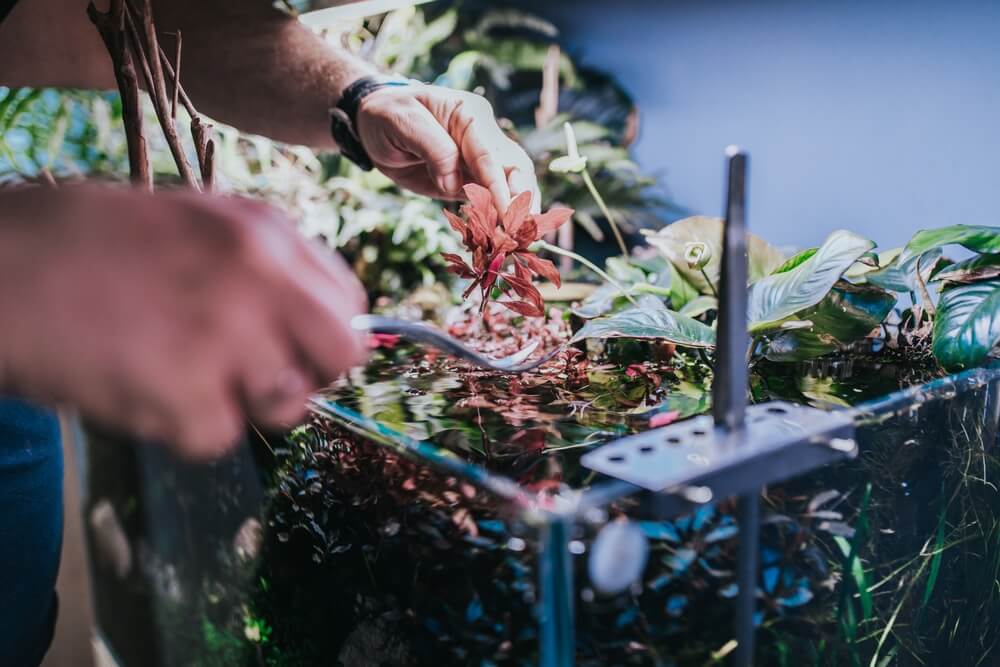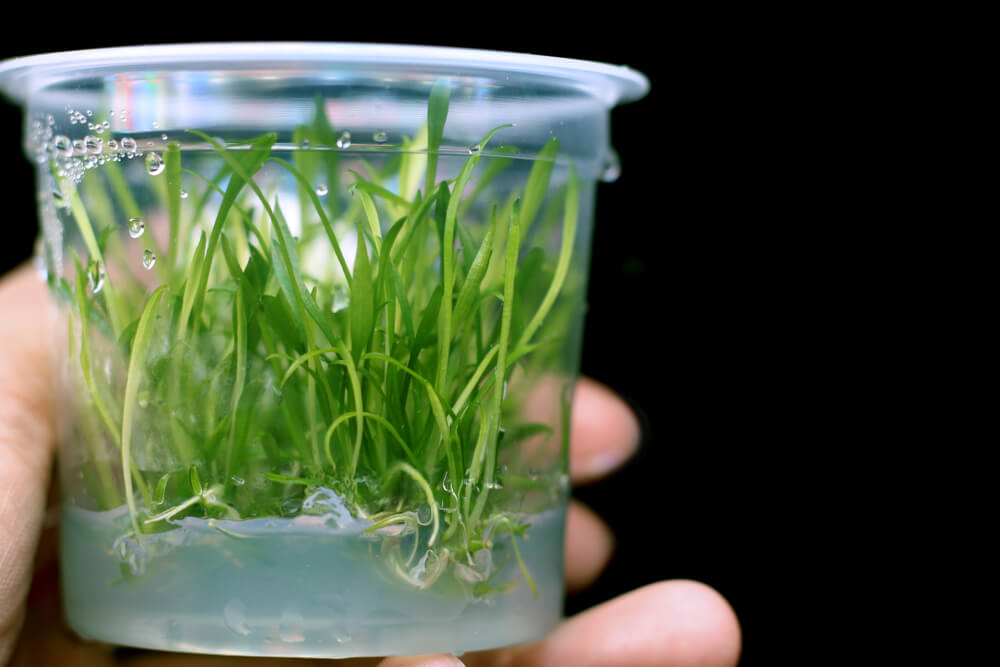Step-by-Step Guide to Selling Aquarium Plants for Profit
Posted by on 02/19/2024
If you’re looking to get started selling plants online, there are a few things you can do to land your first sale. Selling aquatic plants can serve as an excellent source of side income, and can even turn into a full-blown business.
Whether you plan on selling in-person or online, you’ll want to make sure you’re offering the healthiest plants possible. In this post, we’ll outline the steps needed to start selling aquarium plants for profit.
December's Giveaways on Light Fish
Selecting Aquatic Plants to Sell
The first step in selling aquarium plants for profit is choosing the correct plants to sell. While you can choose to grow and sell any plant, we recommend starting with a few plants that are always in demand. Dwarf Sagittaria, Jungle Val, and Anubias species like Anubias Frazeri are popular with hobbyists due to their hardiness and ease of care.
Another popular is "bundles", where you can group multiple different types of plants, and sell them as a "starter pack". After you've made a few sales, you can start getting into more exotic aquarium plants, such as bucephalandra, or more delicate rotala species, such as Rotala Wallichii.

Ensuring Plant Quality
Just like any other product, hobbyists will be judging your business based on the quality of aquarium plants you provide. When selling plants, you'll always want to pick the healthiest plants. Select plants that show their full coloration, have healthy stems and roots, and show no signs of decay or yellowing. Aquatic plants should be fully transitioned before the sale. Meaning, you should only sell plants that have shown healthy growth rates in an emersed or submerged state for at least a month.
It's also important to make sure your plants do not ship with algae or pest snails. These unwanted hitchhikers can easily take over a customer's tank. Luckily, most algae can be manually removed, and you can prevent aquatic snails from taking over by performing an alum dip. Hobbyists may want to consider emersed plant growth (if you've purchased Tropica plants before - this is how they're sold). This growth strategy requires the hobbyist to grow the aquatic plants outside of an aquarium. While it can be a bit more complicated to grow these plants in this state (you'll need to frequently mist the plants, etc.) the result is typically snail and algae-free aquatic plants.
Selling Locally/In-Person
If you have a local aquarium club, you can start by selling plants to some of its members. You can ask for customer feedback to get an understanding of how you can improve your plants and packaging. You may also find that certain hobbyists prefer certain types of plants. This is good information to have as you ramp up your plant production. Eventually, you can expand into selling plants to local fish stores (LFS). If a local fish store is willing to purchase some of your aquarium plants, you can begin to develop a business relationship with them, acting as an aquatic plant supplier.
Selling Online
While selling online can be the most profitable, you'll be competing against thousands of others who are also in the aquarium-plant-selling game. There is a lot to learn when it comes to building an online business, and you'll need to be incredibly dedicated to building an audience in such a competitive space.
Many hobbyists will set up their own e-commerce store with paid services such as Shopify, WordPress, or Wix. Once their website is live, they'll need to drive traffic. Hobbyists will often work on search engine optimization, or explore paid options, such as ads, to land their first digital customers.

Creating the Perfect Listing
When it comes to selling online, customers will want to see clear pictures of your aquarium plants. Therefore, you must provide high-quality imagery as well as detailed descriptions and competitive pricing to give your store the competitive edge it will need to succeed. Additionally, you'll want to provide a clear and easy-to-understand return/doa (dead-on-arrival) policy in case something goes awry during shipping.
Invest a lot of time into making your aquarium plants look intriguing for digital customers, and you'll be rewarded with sales! Offering discounts and giveaways are great motivators to turn a hesitant buyer into a repeat customer.
Selling on Marketplaces
When you're just starting to sell aquarium plants, very few people will be aware of your online brand. You must maximize your visibility online, and selling on marketplaces that already have regular customers is a great way to expand your reach. Marketplaces often take a cut of the sale, but in return put your products in front of thousands of potential customers. Eventually, these customers may even prefer to purchase from you directly, resulting in more profits.
Light Fish, Etsy, and eBay are just a few of the many e-commerce marketplaces available for you to take advantage of!
Packaging your Aquatic Plants
If you choose to sell emersed plants, you'll want to ensure the plants are grown in a tissue culture, and placed inside of a small plastic container. These containers can be placed inside of a shipping container and shipped off to your customer!
However, most hobbyists will be selling submerged plants (plants grown in their aquariums) and this switches things up a bit. Many sellers will bundle their plants together using a magnetic plant anchor, which is placed around the lower portion of the plant's stem. Then, the plants are wrapped in a damp paper towel, placed in a zip-lock bag, and added to a shipping container. We cover shipping aquarium plants in more detail in our guide: How to Ship Aquarium Plants in 5 Easy Steps.
Customer Support
Once you've shipped out an order, you'll want to make sure you can be reached if a customer has questions about their order. Time and time again, many customers will add aquatic plants to their tanks only to witness their newly purchased plants showing signs of decay. With a good customer support plan in place, you can let your customers know that a transition phase for newly acquired plants is normal, and once the plants transition to the customers' tank parameters, they'll bounce right back!
Collecting Reviews
Once you've landed a customer and shipped out an order, pat yourself on the back, not many will make it this far! With the fundamentals now in place, it's time to start ramping up production of your aquatic plant-selling business! One of the best endorsements you can receive is a customer review, whether the review is left on one of your marketplace listings, or the review is left on your very own e-commerce store, both are incredibly valuable for your business. Not only will customer reviews help you improve, but they'll also boost your ranking in search results, a win/win! Don't be discouraged if it's difficult to receive a review, most customers are busy with their lives and don't have time to leave feedback. Use this as a good motivator to deliver a high-quality purchasing experience for every sale, increasing the odds that you'll receive strong reviews over time.
Conclusion
That wraps up our step-by-step guide to selling aquarium plants for profit. With enough determination, you can turn your favorite hobby into an incorporated business! Remember - it takes many years to build a business, so make sure you're in it for the long haul if you plan on taking this endeavor seriously!
Do you think you'll dive into selling aquarium plants for profit? Let us know in the comments, and be sure to check out our marketplace where you can buy and sell aquarium plants with other planted tank enthusiasts!
December's Giveaways on Light Fish


